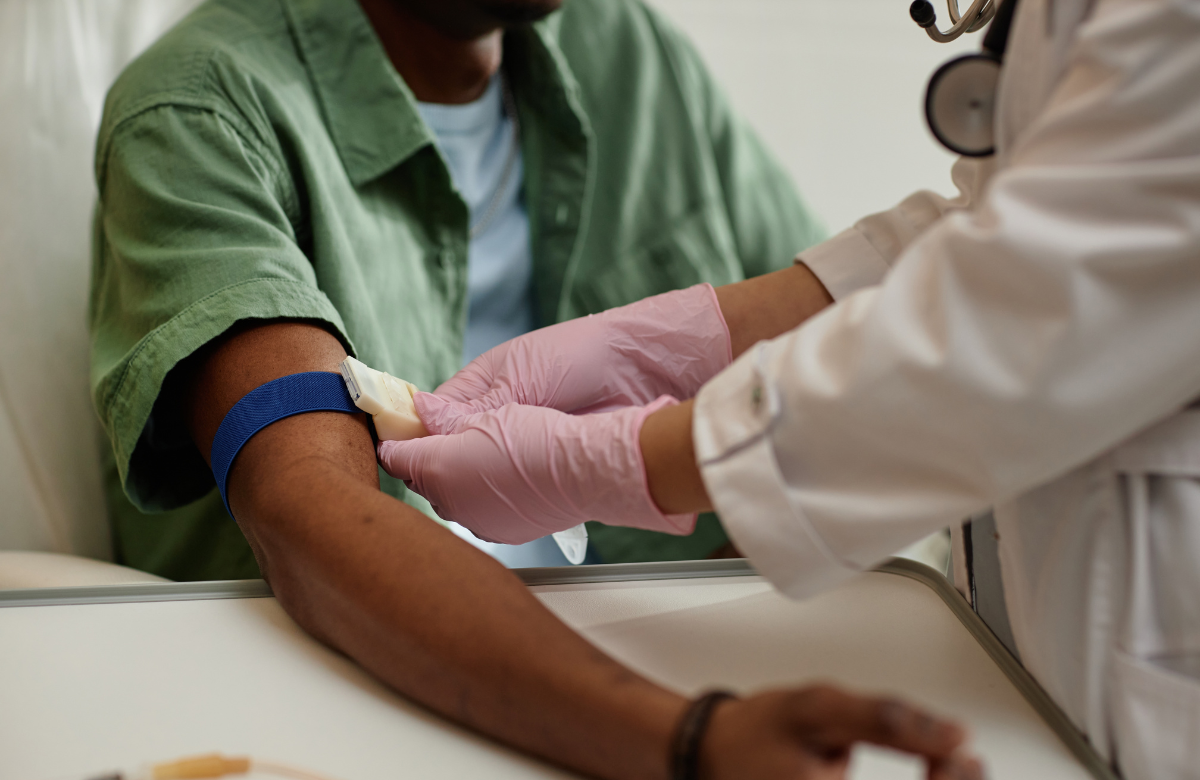Some children who start antiretrovirals very early may control HIV after stopping treatment

A small proportion of children who start HIV treatment within the first two days of life may achieve ongoing viral suppression after stopping antiretrovirals, according to study results presented at the 31st Conference on Retroviruses and Opportunistic Infections (CROI 2024) in Denver, US, this week.
Pregnant women with HIV who are not on antiretroviral therapy (ART) have a 15 to 45% chance of passing the virus on during pregnancy, childbirth or breastfeeding. Taking antiretrovirals reduces the risk to less than 1%, but some women do not receive timely prenatal care or have access to treatment.
This was the case for the mother of a child known as the 'Mississippi baby', who was not on treatment and had a detectable viral load at the time of delivery. Due to the high risk of exposure, the infant started combination antiretrovirals 30 hours after birth, but she acquired the virus nonetheless. The child’s family stopped her treatment when she was 18 months old, but when she returned to care several months later, she still had viral suppression, which was unexpected.
Unfortunately, the girl’s viral load rebounded after 27 months off treatment, but the case added to the evidence that starting treatment very early might limit the size of the viral reservoir and enable a functional cure, especially for children.
To learn more, a study enrolled infants at high risk for HIV acquisition in the womb in Brazil, Haiti, Thailand, the US and several counties in sub-Saharan Africa. Out of the 54 children who acquired HIV in the womb and started combination ART within 48 hours after birth, most did not maintain full viral suppression. This was probably due to inconsistent adherence.
Six children, all from sub-Saharan Africa, had undetectable viral load and met other eligibility criteria for a closely monitored treatment interruption. They started a treatment interruption at a median age of 5.5 years, and four have sustained viral remission for at least 48 weeks. One girl maintained an undetectable viral load for 80 weeks before experiencing viral rebound, while the others were still in remission at 48, 52 and 64 weeks.
While these promising findings hold clues for HIV cure research, such early therapy is currently out of reach for many. Services need to provide immediate neonatal testing and treatment initiation for all infants potentially exposed to HIV in the womb, Persaud commented.
Islatravir plus lenacapavir could be first weekly oral HIV treatment

Lenacapavir, from Gilead Sciences, is the first HIV capsid inhibitor and islatravir is a first-in-class nucleoside reverse transcriptase translocation inhibitor from Merck.
This open-label phase II study enrolled 104 adults with HIV who were taking daily Biktarvy (bictegravir / tenofovir alafenamide / emtricitabine) and had suppressed viral load. Median age was 40 and 18% were women.
The study participants were randomly assigned to either continue taking Biktarvy once daily or switch to taking 2mg islatravir plus 300mg lenacapavir pills once weekly.
At 24 weeks, only one person in the islatravir plus lenacapavir group had a viral load above 50 and he achieved viral suppression at 30 weeks. Both groups had the same rate of viral suppression (94.2%) after accounting for five people with missing data. Both treatment regimens were safe and well tolerated. Follow-up will continue until 48 weeks.
At a media briefing, Dr Colson said that the regimen was “both efficacious and well-tolerated,” and that islatravir plus lenacapavir “has the potential to become the first weekly oral complete regimen for the treatment of HIV.”
If further data continue to show promise, the combination could become the longest-acting regimen that does not involve injections.
Person-centred care improves blood pressure control in people with HIV

Despite evidence that people with HIV have higher cardiovascular risks than the rest of the population, risk factors such as cholesterol and high blood pressure remain under-treated in people with HIV.
In the EXTRA-CVD study, Dr Chris Longenecker of the University of Washington and colleagues designed an intervention to address high blood pressure and elevated cholesterol, based on research into barriers to care for these conditions.
The study took place in Ohio and North Carolina. It randomised 297 people with HIV with high blood pressure and elevated cholesterol to either nurse-led care with home blood pressure monitoring or standard care with prevention education. Nurses met with participants in the intervention arm every two months.
Participants had a median age of 59, 79% were male, 59% were Black, median systolic blood pressure was 135mmHg and median non-HDL cholesterol was 139mg/dl.
After one year, blood pressure was 4.2mmHg lower in the intervention group compared to the control group. Those in the intervention group were almost three times more likely to have reached the treatment goal of blood pressure below 130/80mmHg.
Non-HDL cholesterol was 0.4mmol (16mg/dl) lower in the intervention group and they were seven times more likely to have achieved the goal of non-HDL cholesterol below 130mg/dl (or below 100mg/dl if at high risk of cardiovascular disease).
In the SEARCH Consortium study, researchers in Kenya and Uganda tested whether community health workers could manage severe high blood pressure. They compared management through home visits by community health workers and telehealth consultation with clinicians, with management in a clinic setting.
Severe high blood pressure (160/100mmHg) raises the risk of cardiovascular events. In its acute form (above 180/110), it can lead to kidney damage, stroke and damage to the blood vessels of the eye.
The study randomised 200 people over the age of 40 with either severe or persistent high blood pressure above 140/90mmHg. The median age of participants was 62, 70% were women, 14% were living with HIV and 25% had blood pressure above 180/110mmHg.
At week 24, 77% of people in the intervention arm and 51% of the control arm had achieved blood pressure control (blood pressure below 140/90). By week 48, 86% in the intervention arm and 44% in the control arm had achieved control.
In the third study, Dr Lily Yan from Weill Cornell Medicine in New York and researchers at GHESKIO in Haiti carried out a randomised trial in 250 people with HIV and pre-hypertension.
Pre-hypertension (systolic blood pressure between 120 and 139, diastolic pressure between 80 and 89mmHg) is not routinely treated. However, a 2021 meta-analysis found that even in people with pre-hypertension, a 5mmHg reduction in systolic pressure was associated with a 10% reduction in the risk of a major cardiovascular event.
The study compared immediate treatment with deferral of treatment until blood pressure reached 140/90mmHg. After 12 months, people in the immediate treatment group had reductions of 10mmHg in systolic and 8mmHg in diastolic blood pressure and their mean blood pressure was 5mmHg below that of the deferred group on both measures. They were 59% more likely to achieve blood pressure control after 12 months compared to the deferred treatment group.
At a press briefing, all three presenters stressed the importance of integrating blood pressure management into primary HIV care and building models around existing patterns of care for people with HIV rather than referring to blood pressure specialists.
Young women in African PrEP study achieve good adherence

The INSIGHT cohort is a study of PrEP at 14 sites in South Africa and one each in Eswatini, Kenya, Malawi, Uganda and Zambia. Data were collected between August 2022 and August 2023, though follow-up time for each individual was six months.
The study screened 3342 women, but 142 tested positive for HIV (4.2%) and 113 were ineligible for other reasons, leaving 3087 participants. Their average age was 24. Most (96%) had a primary partner and few had had more than two partners in the past three months. Around 30% had a bacterial sexually transmitted infection, which was treated. Nearly one in seven (13.6%) had used PrEP before.
There was good uptake of PrEP, and persistence in using it, with 92% of participants completing all four study visits.
Although 62% of participants described typical side effects of PrEP such as nausea, most said that PrEP had had a positive impact on their lives. For example, 91% said they were less worried about getting HIV and a similar proportion felt ‘freer’ when having sex.
Dr Brenda Mirembe of Makerere University said that the use of a rapid urine test to measure tenofovir levels and confirm adherence was generally seen as supportive by the participants. Due to supply issues, tests were not available for every participant at every visit, but were conducted with an average of 60% of participants. The results indicated recent adherence of 72% at month one, 71% at month three, and 67% at month six.
But despite high levels of PrEP use, HIV annual incidence remained quite high at 1.38% – or one infection in every 72 participants a year.
Prostate cancer diagnosed later in US men with HIV

Professor Keith Sigel of Icahn School of Medicine at Mount Sinai Hospital, New York, reported on a study of prostate cancer diagnoses and outcomes in the Veterans Aging Cohort Study. The Veterans Affairs healthcare system is the largest provider of HIV care in the US.
In this analysis, researchers matched 751 men with HIV diagnosed with prostate cancer between 2001 and 2018 with 2778 men without HIV who had been diagnosed with prostate cancer during the same period.
Using medical records and cancer registries, they compared cancer stage at diagnosis, survival after diagnosis and testing for prostate-specific antigen (PSA) prior to diagnosis in men with and without HIV. Participants were matched by demographic characteristics.
Men with HIV had significantly higher PSA levels at diagnosis and a significantly higher proportion had metastatic cancer at diagnosis (indicating late diagnosis). However, there was no significant difference in the stage at which tumours were diagnosed when the Gleason score for each tumour was analysed (low-risk, intermediate or high-risk).
Did a lack of PSA testing in people with HIV explain diagnosis at a later stage? PSA testing is an imprecise tool for predicting prostate cancer risk; in the UK it is not carried out routinely for this reason. The US Preventive Services Taskforce says that it only offers a small potential benefit for men aged 55-69 and doesn’t recommend its use in the over-70s.
Although PSA testing increased over time, testing was consistently less frequent in people with HIV across all time periods and age groups.
